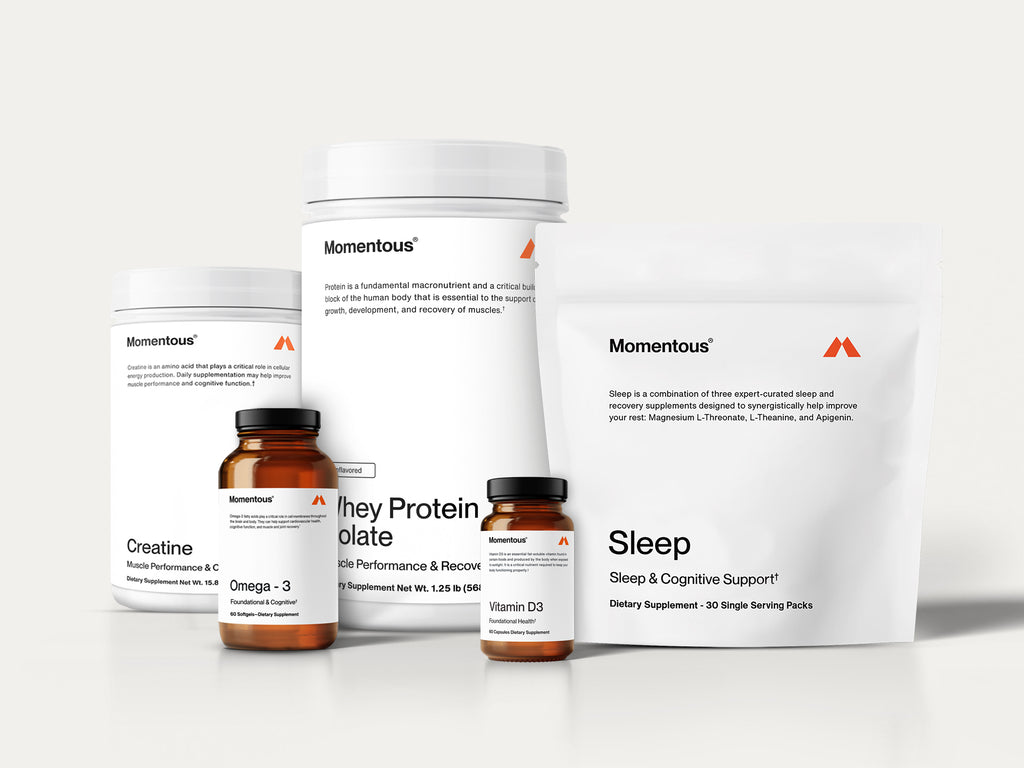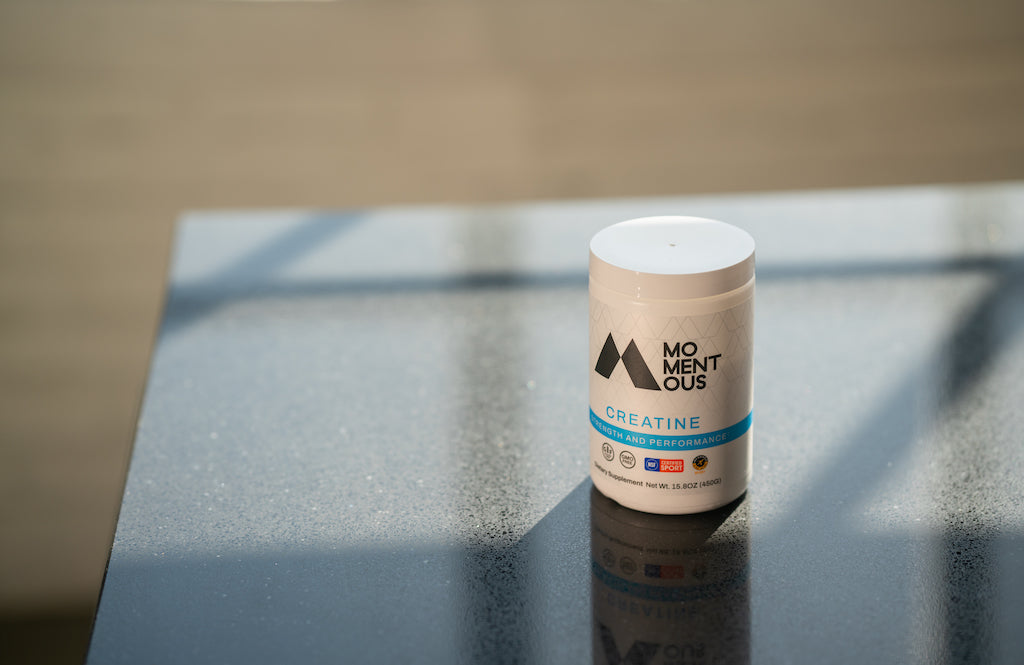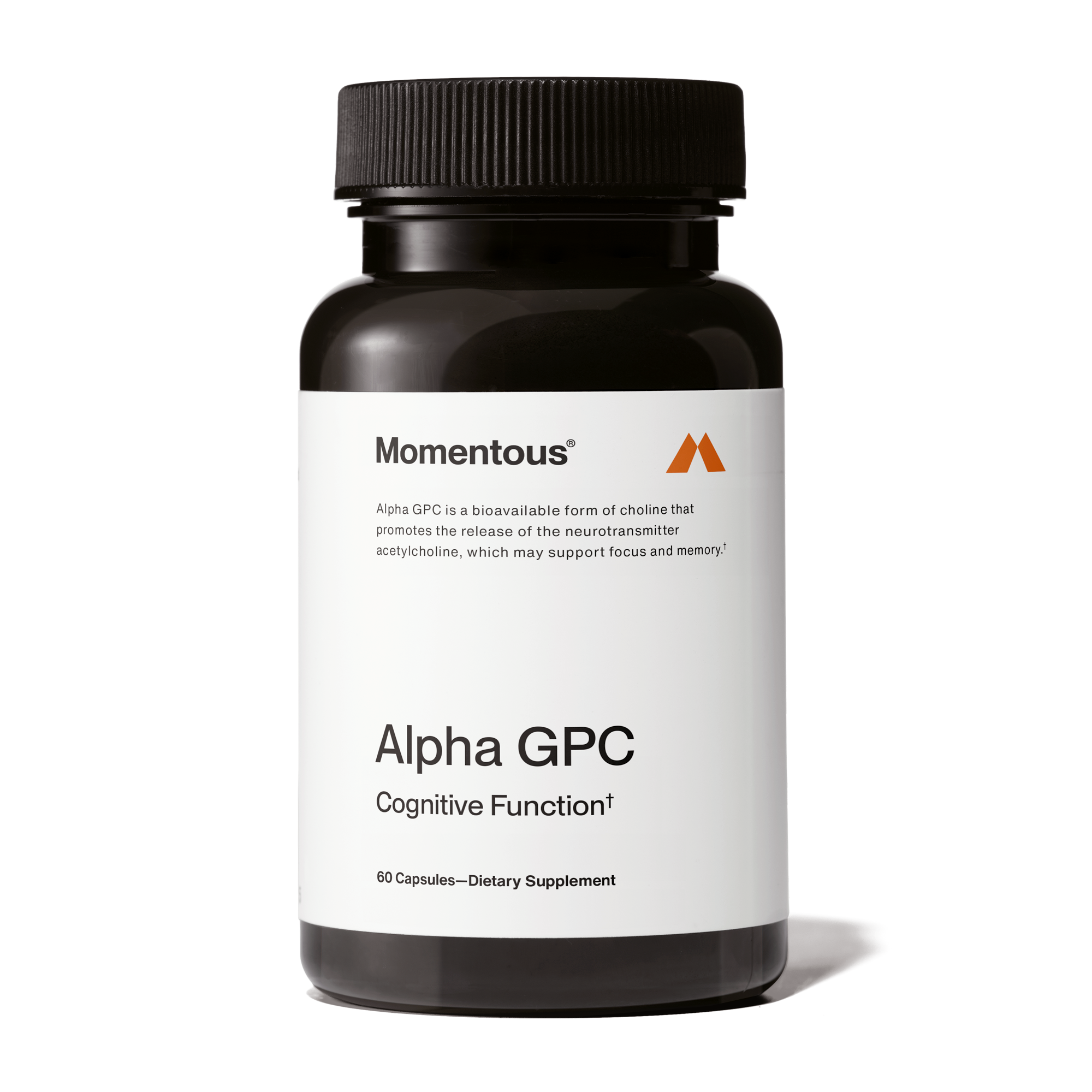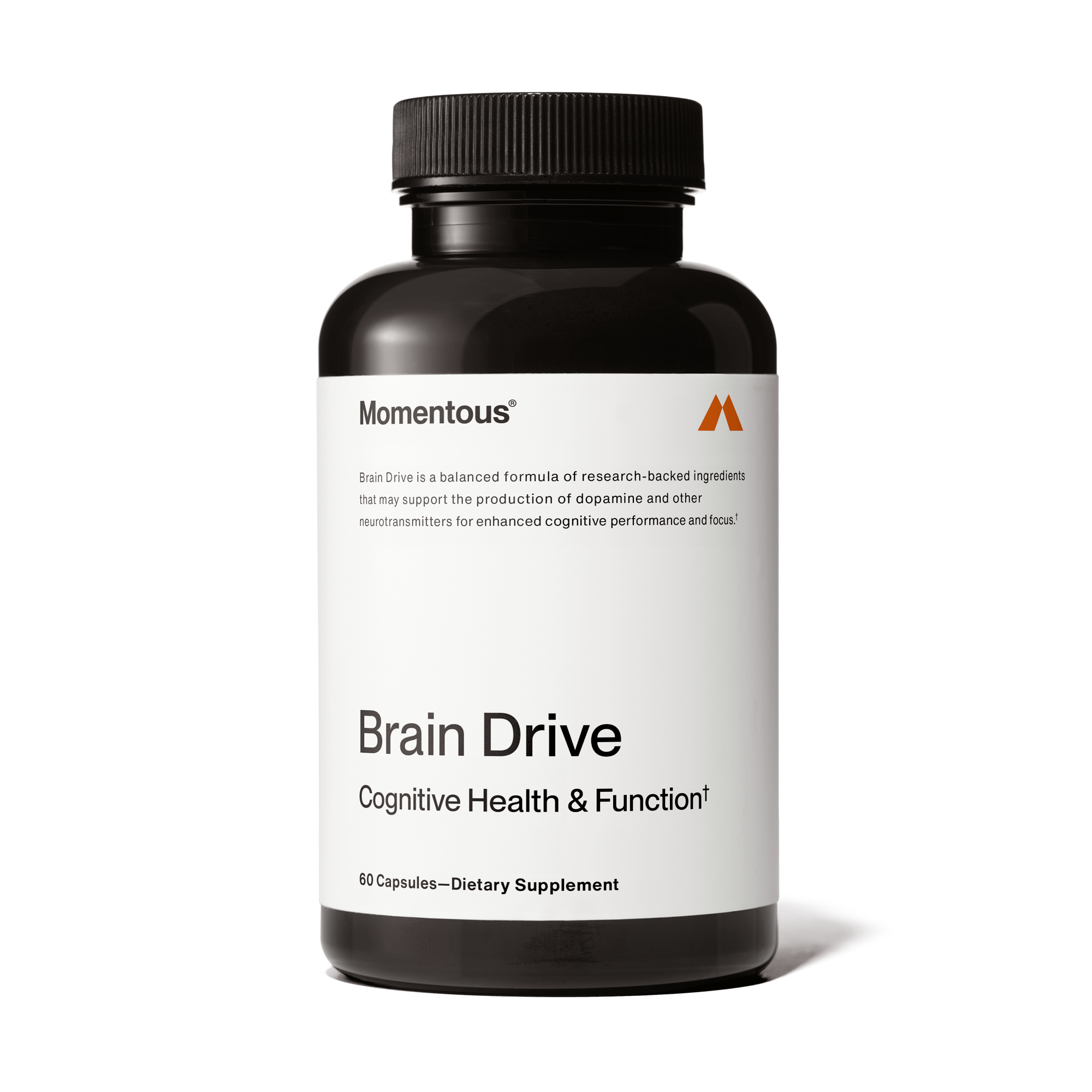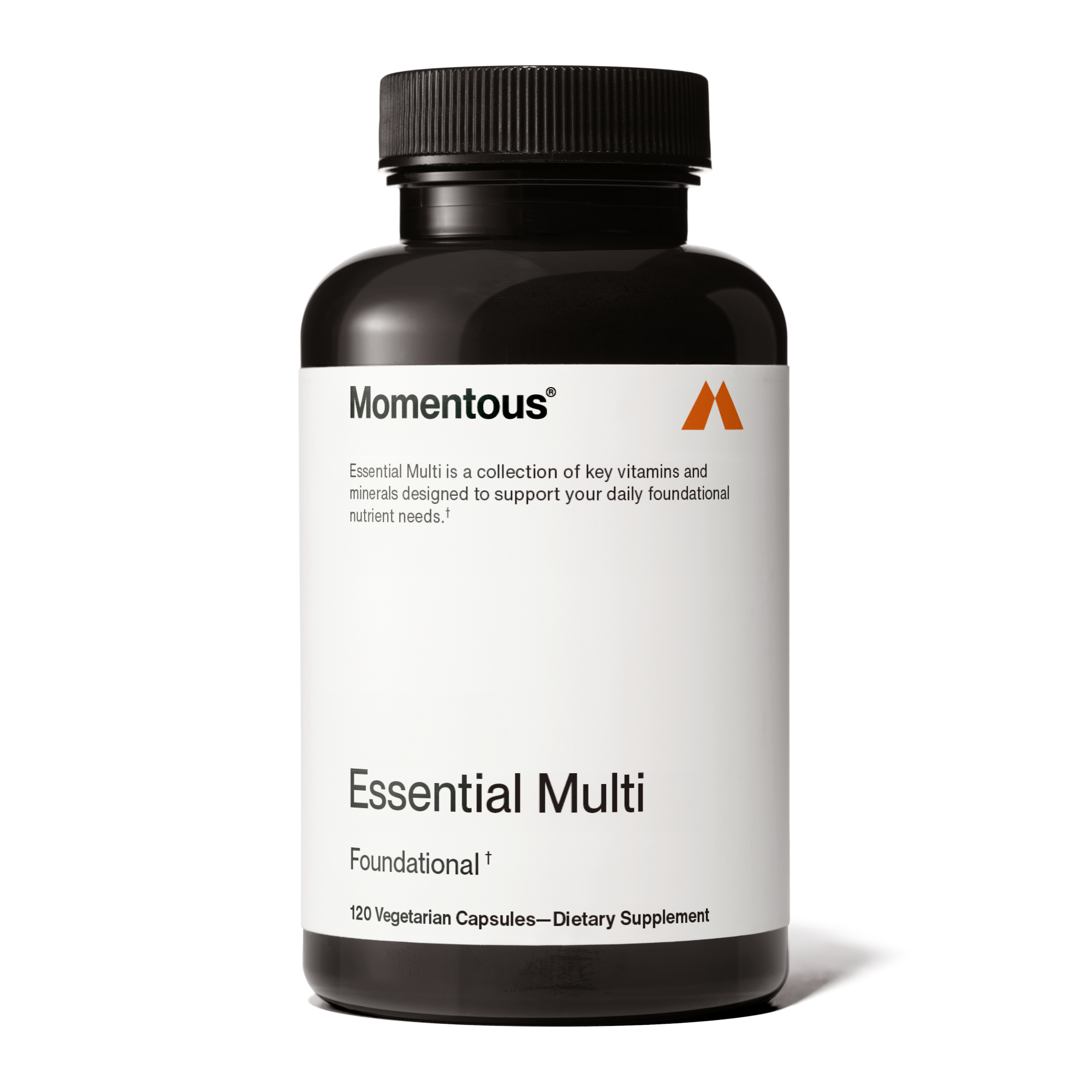Cognitive Function
Cognitive Health, Cognitive Function
Foundational Health
Almost every advertisement for creatine features a buff guy or girl pumping iron. There are plenty of studies to back up the implication of such images: that this supplement can benefit strength and power athletes. But if you’re a runner, cyclist, or triathlete, can creatine supplementation also help you? That’s the question we’ll answer in this article.
What Does Creatine Do in Your Body?
Creatine is an amino acid that your body produces via your liver, pancreas, and kidneys when you ingest protein. It turns into phosphocreatine when you ingest it in the form of foods like beef, fish, and dairy or via a supplement. Phosphocreatine is then stored in your muscles and used by your phosphagen (ATP-PC) system to provide a ready supply of energy during fast bursts of anaerobic activity that typically involve the expression of power, speed, and/or strength for up to 10 seconds. This occurs when the bond between phosphate and creatine molecules is broken, releasing energy that prompts the resynthesis of adenosine triphosphate (ATP), which triggers your muscles to contract quickly.
How Do Endurance Athletes Use Creatine?
While the ATP-PC system is utilized more extensively in sports like basketball, track, football, and rugby that involve repeated high power efforts, the human body uses all its energy pathways to some extent in every activity. In an endurance event, you might see this particular system come into play when you’re a runner trying to catch up with the leading pack, a cyclist attempting to prevent a breakaway, or a rower responding to another boat increasing its stroke rate.
Such use cases might occur multiple times during a practice session and even more so in competition. In which case, your body is going to draw on its stores of creatine and other phosphates. The more often you go into high gear – literally or metaphorically – and the longer your burst of speed lasts, the greater the drain on your phosphate reservoir and the more that you’ll need to replenish it afterward.
What Does the Research Say About Creatine Supplementation in Endurance Training?
If your program includes any kind of interval training, creatine might help improve your output. A study published in the Journal of Strength and Conditioning Research found that four weeks of creatine supplementation increased participants’ critical power during a series of two-minute intervals, leading the authors to state that taking creatine regularly “may enhance the effects of intense interval endurance training.”[3] Such research prompted a review by the International Society of Sports Nutrition to state that, “creatine monohydrate is the most effective ergogenic nutritional supplement currently available to athletes in terms of increasing high-intensity exercise capacity.”[4]
Creatine might also help your body continue performing at a high level during extreme temperatures. A team from universities in Cyprus, Scotland, and Wales examined several biomarkers after endurance athletes conducted a test in the heat and found that those who took creatine beforehand had a lower core temperature, less leg fatigue, and a lower heart rate.[5] The researchers suggested that this was because of the way creatine interacts with serotonin and dopamine release in the brain, changing the athletes’ perception of how the temperature impacted them.
How Much Creatine Do I Need and Should I Use a Loading Phase?
This being said, some athletes find that creatine loading is effective. For example, one researcher tested elite rowers before and after they took 20 grams of creatine daily for five days, and found that their lactate threshold increased.[7] They were also able to row for longer before exhaustion.
Momentous Performance Engineer Dave Scholz, who serves as the head strength and conditioning coach for the Texas Tech football team, recommends loading 20 to 25 grams of a supplement like Momentous Performance Creatine per day for a week, broken up into four or five doses. After this, keep your body topped up with three to five grams daily. Contrary to internet mythology, you don’t need to cycle on and off creatine and, given the years of extensive research into its use, it is safe for almost every athlete to take. If you have doubts, consult your doctor or a nutrition professional.
Which Kind of Creatine Should I Use?
You might find multiple kinds of creatine on the market, including chelate, hydrochloride, and malate. But the most bioavailable and heavily researched form is creatine monohydrate. We scoured the planet for the purest kind and found it in Germany. That’s why we sourced Creapure® from AlzChem to create Momentous Performance Creatine, which provides 90 servings and is proven to be free of banned substances and contaminants by NSF Certified for Sport® and Informed Sport designations.
Resources
[1] Kristyen A Tomcik et al, “Effects of Creatine and Carbohydrate Loading on Cycling Time Trial Performance,” Medicine & Science in Sports & Exercise, January 2018, available online at https://pubmed.ncbi.nlm.nih.gov/28806275/.
[2] Robert Cooper et al, “Creatine Supplementation with Specific View to Exercise/Sports Performance: An Update,” Journal of the International Society of Sports Nutrition, July 20, 2012, available online at https://www.ncbi.nlm.nih.gov/pmc/articles/PMC3407788/#B7.
[3] Kristina L Kendall et al, “Effects of Four weeks of High-Intensity Interval Training and Creatine Supplementation on Critical Power and Anaerobic Working Capacity in College-Aged Men,” Journal of Strength and Conditioning Research, September 23, 2009, available online at https://pubmed.ncbi.nlm.nih.gov/19675499/.
[4] Richard B. Kreider et al, “International Society of Sports Nutrition Position Stand: Safety and Efficacy of Creatine Supplementation in Exercise, Sport, and Medicine,” Journal of the International Society of Sports Nutrition, June 13, 2017, available online at https://jissn.biomedcentral.com/articles/10.1186/s12970-017-0173-z.
[5] Marios Hadjicharalambous, Liam P Kilduff, and Yannis P Pitsiladis, “Brain Serotonin and Dopamine Modulators, Perceptual Responses and Endurance Performance During Exercise In the Heat Following Creatine Supplementation,” Journal of the International Society of Sports Nutrition, September 30, 2008, available online at https://www.ncbi.nlm.nih.gov/pmc/articles/PMC2570654/.
[6] M Engelhardt et al, “Creatine Supplementation in Endurance Sports,” Medicine & Science in Sports & Exercise, July 1998, available online at https://pubmed.ncbi.nlm.nih.gov/9662683/.
[7] Jolanta Chwalbiñska-Moneta, “Effect of Creatine Supplementation on Aerobic Performance and Anaerobic Capacity in Elite Rowers in the Course of Endurance Training,” The International Journal of Sport Nutrition and Exercise Metabolism, June 2003, available online at https://pubmed.ncbi.nlm.nih.gov/12945828/.
